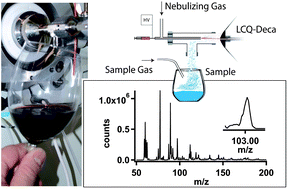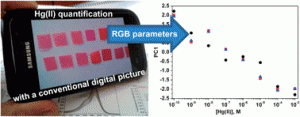γ-Hydroxybutyrate (GHB) is an odourless, tasteless compound sold illegally as a recreational drug under various names including ‘liquid ecstasy’. However it is more widely known as a date rape drug, causing catalepsy and short term memory loss when added to drinks. Renato Zenobi and researchers at ETH Zürich report a new application of secondary electrospray ionisation (SESI) mass spectrometry for the detection of GHB in drinks and bodily fluids. The results were found to be consistent across different mass spectrometers and matrices. Both rapid and reliable, this method has the potential to prevent crimes by detecting drugs like GHB (and the structurally related compound GBL) in the headspace of a drink before it is consumed.
This article will be free to read until January 9th. Take a look now:
In situ detection of γ-hydroxybutyrate and γ-butyrolactone in drinks by secondary electrospray ionization
Christian Berchtold, Stefan Schmid, Lukas Meier and Renato Zenobi
Anal. Methods, 2013, Advance Article
DOI: 10.1039/C2AY26009C













